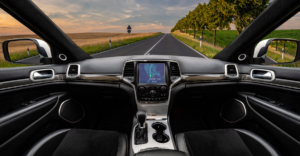A new California law taking effect next year marks a significant shift in how the state will regulate and enforce traffic laws against autonomous vehicle (AV) operators. For the first time, driverless car companies themselves—not human drivers—will be held accountable for traffic violations.
This change follows an incident in San Bruno, CA that revealed a gap in existing traffic enforcement statutes—one that left police unable to cite a vehicle that clearly violated the law.
The San Bruno Case: A Legal Loophole in Plain Sight
Earlier this year, San Bruno police observed a Waymo autonomous vehicle making an illegal U-turn at an intersection clearly marked with a “No U-Turn” sign. When officers attempted to issue a citation, they discovered there was no legal mechanism to do so—California’s Vehicle Code presumes the existence of a human driver.
This situation exposed a fundamental flaw in California’s traffic enforcement framework: the law simply had not evolved to address non-human drivers operating on public roads.
Waymo, the operator involved in the San Bruno incident, issued a statement reaffirming its commitment to safety:
“Waymo’s autonomous driving system… is designed to respect the rules of the road. We are looking into this situation and are committed to improving road safety through our ongoing learnings and experience.”
Legal Implications
From a legal standpoint, the new law—allowing the issuance of a “Notice of Autonomous Vehicle Noncompliance”—represents a critical adaptation of liability and enforcement principles in the age of artificial intelligence.
Until now, the absence of a human operator created uncertainty about who could be cited, fined, or held responsible for infractions committed by autonomous systems. The new statute effectively transfers accountability to the corporate entity or operator responsible for programming and deploying the vehicle.
This shift raises several key questions for attorneys practicing in regulatory compliance, tort law, and emerging technology:
- How will “operator” be defined for purposes of liability?
- Could repeated infractions lead to broader administrative or civil penalties?
- And how will this intersect with potential claims arising from accidents involving autonomous vehicles?
While this legislation clarifies one piece of the enforcement puzzle, it also lays the groundwork for future civil litigation and regulatory oversight related to automated driving systems.
Looking Ahead: Legal Changes in the Autonomous Era
For attorneys, California’s new approach represents a case study in legislative adaptation—an example of how long-standing statutory frameworks must evolve to accommodate artificial intelligence and automation.
As driverless technologies continue to expand, lawyers advising AV companies, municipalities, and insurers should anticipate a rapidly developing landscape of:
- Administrative enforcement procedures
- Operator liability standards
- Insurance coverage disputes
- Evidentiary challenges in proving system fault
California’s “Notice of Autonomous Vehicle Noncompliance” law is likely to serve as a model for other jurisdictions, setting precedent not only for enforcement, but for how legal systems attribute responsibility in an increasingly automated world.
The autonomous era is redefining not only how vehicles move, but how the law assigns responsibility. We’ll continue tracking this case and related developments as legislators, regulators, and the courts navigate the road ahead.



